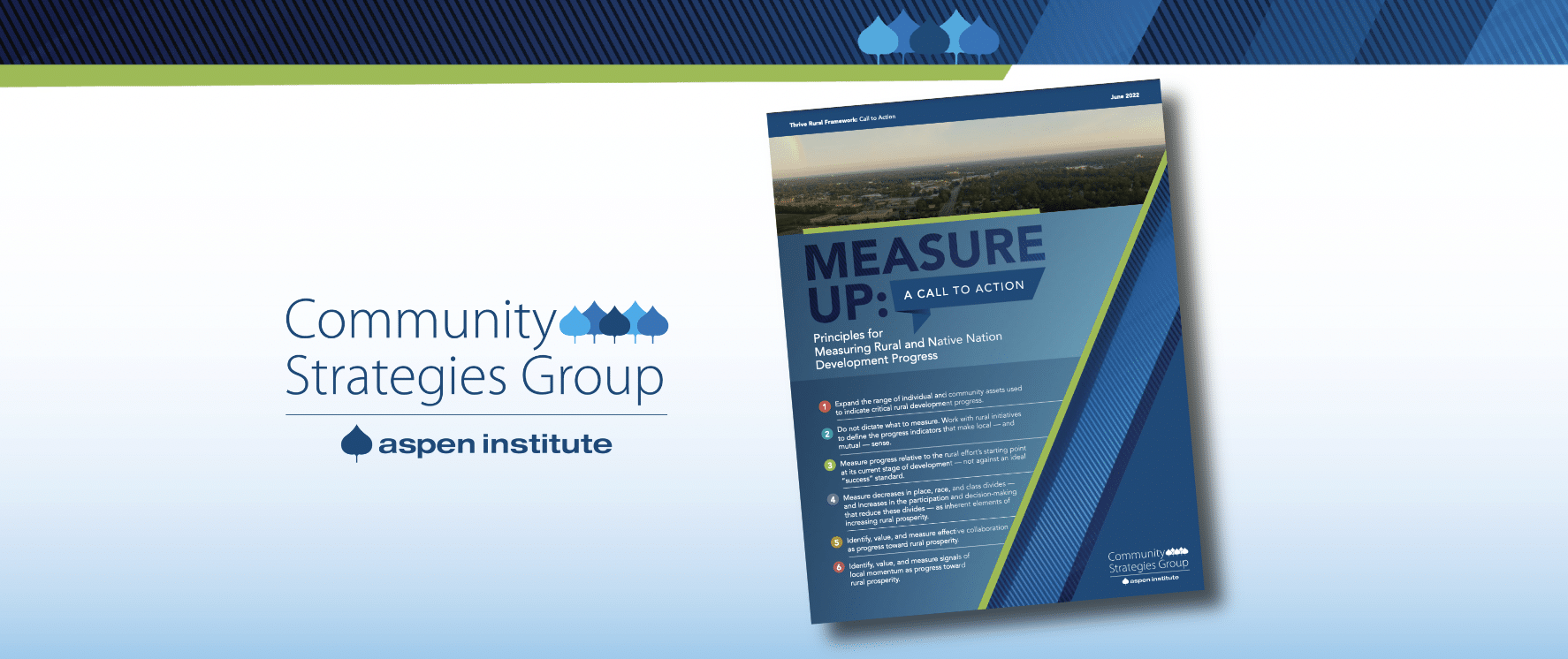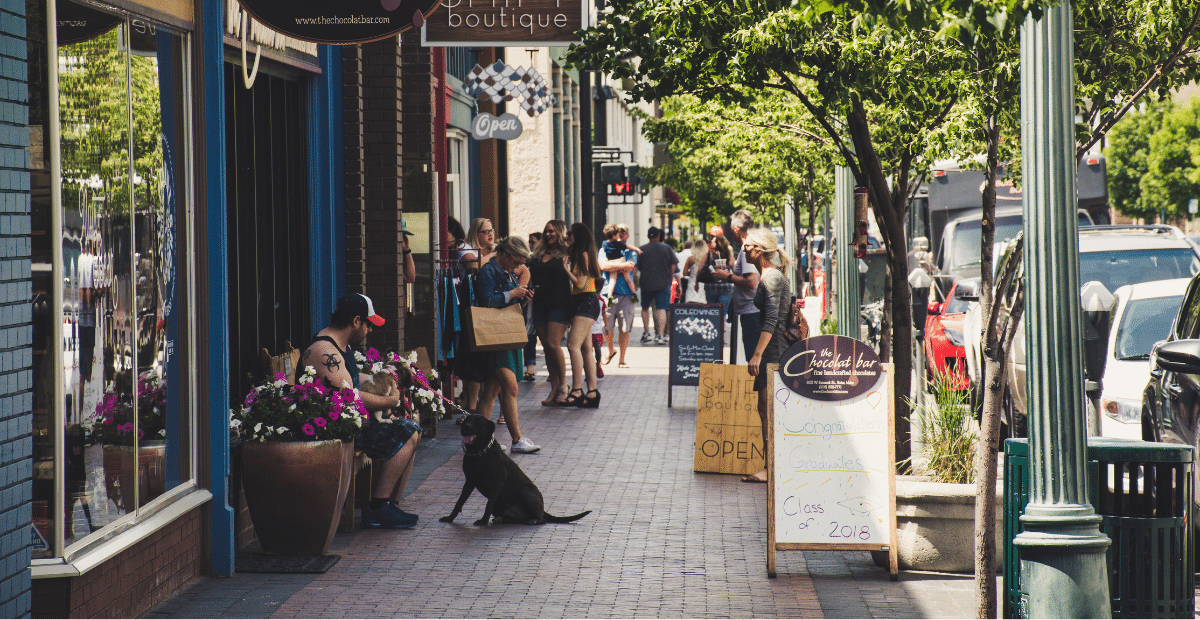View this Publication
For key takeaways, see the Executive Summary. And for useful resources for measuring rural progress, see the accompanying Annotated List of Resources.
Introduction
Today we have a generational opportunity to strengthen both prosperity and equity in rural communities and Native nations in the United States.
The billions of dollars made available in COVID recovery funding as well as the Infrastructure Investment and Jobs Act are historic. Should a version of it pass, the potential $1 billion or more in the proposed Rural Partnership Program would provide sorely needed flexible resources for strapped rural and regional development collaborations. How the Economic Development Administration designs and makes decisions about the distribution of its unprecedented and significant increases in program funds, and how the Rural Development title is crafted in the likely 2023 Farm Bill reauthorization, among other legislative and administrative developments, may present additional opportunities to help communities and Native nations across the rural United States take the reins to strengthen economic, social, and health outcomes across their regions.
Likewise, several phenomena of the times have increased attention to rural populations, places, and businesses. For one example, the ravages of COVID and the opioid epidemic have raised consciousness about the worsening state of rural health and health care relative to urban. On the other side of the coin, fostered by the draw of outdoor recreation and family-raising quality of life, in recent years more people have moved from urban and suburban to rural places, which was further bolstered by the COVID-induced reality that many occupations can now work from anywhere. That phenomenon has both spotlighted the value of rural living and raised its cost, increasing hardships for lifelong rural residents and essential workers who can no longer afford it.
In addition, the results of the 2020 Census, coupled with the growing cognizance of economic, social, and power inequities that have resulted from historic discriminatory practices, have raised awareness that one in four rural people are people of color – and that they account for the largest segment of growing or stabilizing population in many rural communities. Media coverage of these and other developments have piqued the interest of more foundations and individual investors, plus greater focus from the state and federal program levels, in rural community and economic development.
Any increased funding that accompanies this attention is necessary and welcome, but far from sufficient. Increased funding through the same program “pipes” will likely only give rural America more of the inequitable outcomes it has already experienced. So some program redesign is required. Also required is a fundamental reassessment of how we measure rural development progress and success and who gets to decide.
If we get this reassessment right, the funding pipeline from all sources – federal, state, philanthropic, and private – will have far greater impact, especially for our most isolated and/or disenfranchised rural and tribal neighbors. And considering the rare confluence of resources and attention in play, we must measure up to the opportunity before us. We must measure what matters to rural people and communities, based on their deep knowledge and lived experience about what will best deploy their many assets to successfully address their localized opportunities and challenges.
This Call to Action amplifies the voice of 46 community and economic development practitioners from across rural and Native nation communities in the United States who make that case. It is offered as a tool to open and deepen conversations about better ways for funders and investors to design programs through which rural community and economic development practitioners and collaborations have the flexibility and power to decide what is most important to take on right now, what progress looks like, and how to measure it.
TRALE Structure
This Call to Action is the result of the first Thrive Rural Action-Learning Process (TRALE). The objective of each TRALE process is to quickly tap on-the-ground insights And experiences to help generate some breakthrough thinking about what works and what’s needed to push policy and practice toward increasing well-being for more people and places in rural communities and rural Native nation areas across the country, especially in areas of concentrated poverty. The Aspen Institute Community Strategies Group (CSG) conducts each TRALE process, working with a varying set of collaborating partners. In each TRALE process, Aspen CSG asks approximately 50 rural doers, practitioners, advocates, and innovators with grounded knowledge to answer a specific question important to advancing action that will increase rural prosperity and equity. The conversations with TRALE participants around each question take place in small groups of four to eight people each over a short period, no longer than two months.
TRALE 1 Participants and Structure
For this first TRALE process, Aspen CSG convened a total of 46 seasoned rural economic and community development practitioners from rural and Native nation communities across the United States. Each participant was recommended by national and regional organizations with deep engagement in rural America, including, in addition to Aspen CSG, the Rural Community Assistance Partnership, the Housing Assistance Council, and Rural LISC, among others. Aspen CSG invited recommended participants and offered an honorarium for their preparation and participation in the TRALE discussion. Each TRALE participant joined one of eight two-hour discussions with between four and eight people each in August and September 2021. The 46 TRALE 1 participants work in many of the nation’s nearly 2,000 rural counties. (Of the nation’s 3,142 counties, 1,976 – 63% – are classified as rural.) Collectively, the diverse participants account for hundreds of years of experience in rural economic development, community human services and health, housing, transportation, small business development, family asset building, development finance, grassroots community engagement and advocacy, and regional development. They are respected, committed leaders in their communities. See page 50 for the list of TRALE 1 participants.
TRALE 1 Focus
Measuring Rural Development Success
Each TRALE 1 engagement addressed the issue of what indicators and measures should be used to signify short- and medium-term progress – and longer-term community and economic development success – for rural and rural Native nation communities. Participants were asked to share their own experience and ideas to answer two specific questions:
- What do we need to measure to truly indicate progress at increasing prosperity and equity in rural places and populations over the short, medium, and long term?
- What will it take for public, private, and philanthropic systems and investors to value, organize around, and use those measures?
Participants were asked to keep the following context points in mind as they prepared for the TRALE discussion – context that made the two TRALE 1 questions timely and important:
- For decades, rural community and economic practitioners have maintained that many indicators or measures of “success” that government, philanthropic, and private programs and investors ask them to produce and report are not well-suited or relevant to rural places. In some cases, investors are looking for raw aggregate numbers to show scale of impact, which always places rural investments at a disadvantage to urban options; in others, investors focus too narrowly on immediate job creation, dollars leveraged, or financial return-on-investment rather than the critical human, organizational, civic, and environmental ingredients that are fundamental to producing jobs and financial return over a longer term.
- We are in a “moment” of increased attention to rural places and people, and of increased will on the part of government and philanthropy to examine (and potentially adjust) their practices and policies to better serve rural, advance rural prosperity, and strengthen rural-urban connections. In both government and philanthropic circles, some leaders are asking: “What should we be measuring in rural? And how can we do it?” We want to help provide useful answers to meet this opportunity.
The TRALE 1 participants contributed an abundance of rural development experience and knowledge, far more than could be included in a report focused primarily on measuring rural development progress and success. But, before detailing the six primary measurement principles that emerged from their exchanges, it is important to note two significant context issues that are important background to help understand working in rural America.
The Community Challenge of Using Quantitative and Qualitative Data
The inadequacy of federal data was a recurring theme in many TRALE sessions. Because of the lower density in rural areas, the Census Bureau’s American Community Survey provides only a five-year rolling average for key demographic data in many rural counties and sub-county areas. This is inadequate for developing or evaluating programs that focus on producing results over one- or two-year time frames. More up-to-date statistics are collected and released annually or more frequently by the Department of Labor and the Bureau of Economic Analysis, but for rural areas—especially sub-county rural areas—these can be limited by data privacy requirements. When examining data from small geographic areas, outlier households and businesses can be easily identified; to maintain privacy, that small-area data is often suppressed. In 2020, the Urban Institute, Housing Assistance Council, and Aspen Institute Community Strategies Group released In Search of “Good” Rural Data, a report that details the challenges of securing and using reliable quantitative data in rural and Native communities. That report also notes emerging data sources and methods, such as proprietary private data and new national surveys. Practitioners highlighted the need for improved qualitative measurement methods and best practices to better capture community conditions and perspectives.
Native Nation Realities
Native nations are mostly rural in setting, but culture, governance, and historic and ongoing oppression make their realities distinct from the rest of rural America. Aspen CSG’s Native Nation Building: It Helps Rural America Thrive outlines the historic oppression, cultural distinctions, and sovereignty that shape these unique conditions, as well as the nation-building strategies necessary to strengthen Native culture and prosperity while linking those efforts to broader rural development. TRALE participants from Native nations—deeply knowledgeable about their communities and histories—emphasized these distinctions while contributing insight and resonance to the TRALE findings overall.
As Lakota Vogel put it: “It really is important to understand that the difference between rural America and Native America is that we’ve been through a forced assimilation…where the government was hoping we would just melt away into the fabric of America.” Others noted issues of data sovereignty and the importance of understanding that tribal lands and communities are not like civic municipalities. Pamela Standing explained:
“People don’t understand when they work with us; they treat us like we’re a municipality and that we have access to all these resources that a township or city or municipality has. We don’t have access to those resources. We are in the process of building the legal and physical infrastructure that we need to grow a diverse and thriving economy in our communities.” — Pamela Standing, Minnesota Indigenous Business Alliance
They also pointed to the decades of determined Native effort to rectify injustice and exercise sovereignty, now growing in strength. Standing again: “I heard an elder say something once. I’m going to probably say it wrong, but she said “‘They didn’t realize when they tried to bury us that we were the seed, and, you know, so we’re still here.'” Weaving these realities of Native history, conditions, culture, organization, and assets is critical to advancing both Native and rural prosperity in any region.
6 Principles for Measuring Rural Development Progress
- Expand the range of individual and community assets used to indicate critical rural development progress.
- Do not dictate what to measure. Work with rural initiatives to define the progress indicators that make local – and mutual – sense.
- Measure progress relative to the rural effort’s starting point at its current stage of development – not against an ideal “success” standard.
- Measure decreases in place, race, and class divides – and increases in the participation and decision-making that reduce these divides – as inherent elements of increasing rural prosperity.
- Identify, value, and measure effective collaboration as progress toward rural prosperity.
- Identify, value, and measure signals of local momentum as progress toward rural prosperity.
Measurement Principle One: Expand the range of individual and community assets used to Indicate critical rural development progress.
Today we have a generational opportunity to strengthen both prosperity and equity in rural communities and Native nations in the United States.
One thing that may be easier in rural places is to quickly and clearly discern the connections and the impact that action – or inaction – on one issue or condition has on other issues and conditions. Rural development practitioners are quick to note, for example, when regional educational institutions offer training regimens for job skills that are a mismatch with what local employers demand, or when lack of transportation or childcare for workers is the true impediment keeping local people from attaining better jobs or hindering local employers from expanding. Likewise, they can see the difference that one key change – for example, a Main Street building restoration, the resurgence of an annual festival that draws outsiders and sparks youth participation, the start of one new locally owned enterprise, the creation of a dozen new childcare slots, the clean-up of one eyesore or environmental hazard, the presence of a circuit-riding doctor or dentist one day a week in the community, or a few workforce housing energy retrofits that improve family bottom lines – can have on moving things in a new direction across a community.
These “asset changes” are often critical preconditions to achieving the more conventional and longer-term measures that many public, private, and philanthropic funders require rural projects to report as “development progress.” Those more conventional measures – for example, the number of new jobs, the volume and extent of loans, or return on standard investments – are often inappropriate in rural communities. This is especially true in places that have, for example, been historically left out or discriminated against, that need prerequisite skill building, or that must address other community, family, or worker priorities first. These other “asset changes” are thus more important and useful measures of progress during some stages of rural development. And, unless they are accomplished, the more conventional measures of progress may never be in reach.
Many funders stick with the conventional measures for understandable reasons. Data on them may be more easily or universally available across place because it is collected nationwide by government sources; thus, it is easier to aggregate “impact” across a set of a funder’s investments if each funded effort is required to report on the same publicly available indicators. In addition, reporting easily countable and tangible things like jobs created and loans made makes it easier for leaders to claim or assign credit for success.
Rural development practitioners are asking for flexibility to allow and use a broader, more holistic set of community and economic development progress measurements. Doing so encourages local analysis that drills down to a place’s specific economic sectors and geographies, that identifies the real factors that stand in the way of next-level progress, and that gauges whether supports and systems are in place to catalyze and sustain longer-term progress. Over just the course of the eight TRALE group discussions, practitioners suggested numerous alternative economic and community metrics.
For example:
- The stock of year-round, locally owned housing
- Change in school enrollments
- The number/ratio of disconnected youth
- Increases in post-secondary educational attainment
- Labor market participation rates
- Changes from an accurate baseline in the number and growth of locally owned enterprises
- Business longevity and growth rates
- Growth in high wage/high demand sectors
- Changes in race, ethnicity, and gender wage gaps
- Affordable child care slots compared to demand
- Community college alignment with the local economy
- Aligned continuum of family services
- Entrepreneurial growth as voluntary or involuntary (Is self-employment only an emergency response?)
- Dollar leakage in or out of the community
- Change in air, water, and housing quality
- Economic and social impact of job retention
- Living wage requirements – and living wage job availability – in a region
- Change in household savings rates
- Broadband coverage to homes rather than broadband “coverage” only on Main Street
Other practitioner exchanges have offered many more – and more targeted and intensive consultation and research would do the same.
The TRALE process also surfaced that, despite often rigid reporting requirements, some practitioners are voluntarily submitting supplemental measures to their funders that better reflect reality on the ground. Cheryal Lee Hills of the Region Five Development Commission (R5DC) in rural Minnesota offered this approach:
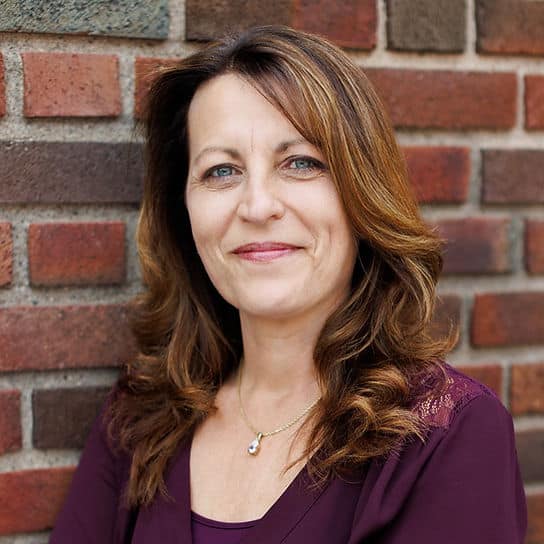
“It’s important to challenge systems that have been entrenched in Congress, our state agencies, or foundation partners that say, ‘This is how you’re going to measure success.’ We’ve been taking the approach where our team will measure what the agencies or foundations want and we will measure what our communities care about. We then give the funders both – in hopes they will see that both qualitative and quantitative matter and will evolve into better measures of success.”
Cheryl Hills, Region 5 Development Commission
R5DC organizes their “what my community wants” measures around eight categories of community assets, derived from the historic “community capitals” research that is incorporated and expanded in the WealthWorks approach to rural development. Their Minnesota Region 5 Development Commission WealthWorks Evaluation framework can help individuals and communities set development priorities and offer clear and relevant metrics of progress. Their practice illustrates the value of using well-designed, well-researched frameworks to set priorities and measure true rural progress.
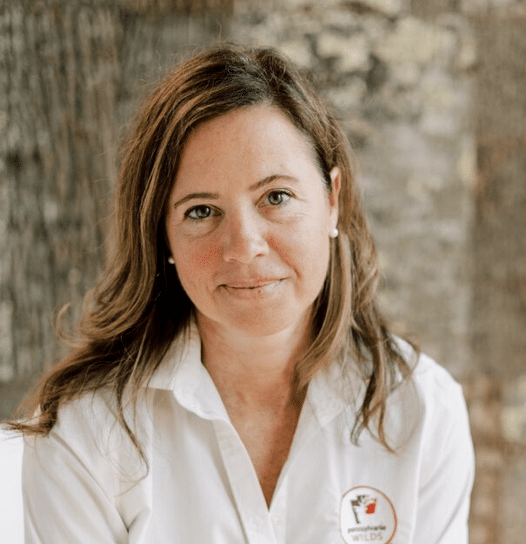
“Increasing or maintaining the balance of locally owned businesses – that’s the root of local wealth. In so many distressed rural areas, there has been this great outsourcing. The hardware stores, grocery stores, hospitals, many major employers, even the newspapers are now owned by corporations outside the community. In some cases, this has kept these services available, but the collective effect is that all this outsourcing has become like a vacuum sucking local wealth and power out of rural communities. It impacts jobs, wages, philanthropic giving, services, pride of place. In the PA Wilds we are trying to counter this by focusing on building rooted local wealth through entrepreneurship. It would be great to see more focus around local ownership and the multiplier effect it can have on rural communities.”
Ta Enos, PA Wilds Center for Entrepreneurship
“One of the measurements that we have used to track ourselves was [heirs’-property ownership] titles resolved, and one of our funders kept saying ‘Well, is that all you guys are doing?’ And we’re like, ‘But do you recognize how much time and energy – and how much education – we’re providing to families just to get them to that point?’ It is an education moment for the nonprofit to help [the funder] understand the complexity of the work that you are providing and try to convince them.”
Jennie Stephens, Center for Heirs’ Property Preservation in South Carolina
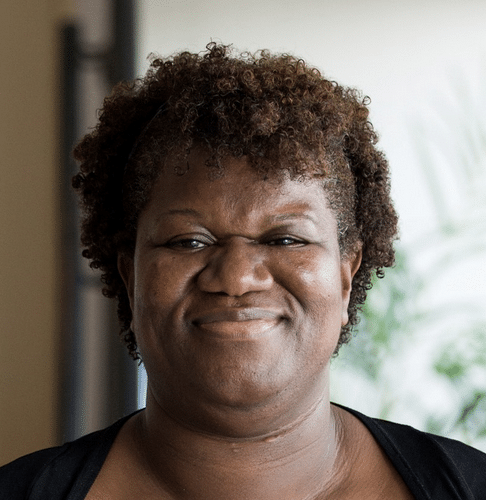
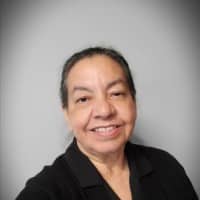
“Most Community Action Agencies operate LIHEAP (Low Income Home Energy Assistance) programs … but who actually benefits? Yes, the families benefit because they have a portion of their light bill paid. But has anything changed? Or are they not going to need assistance in three months or four months? But who gets the cash? The utility companies. Same with these rent assistance programs, yes, we are helping to prevent massive numbers of evictions. We don’t talk about the fact that while some landlords are huge corporations, others are a small local business that may own one or two or three rental homes…and we help them prevent foreclosure on properties for which they still have mortgages or we help prevent them from having a significant decrease in their income as a result of their tenants not being able to pay their rent… [Some policy-makers]…focus on the deficits of the families that we serve rather than recognizing where the cash is actually going.”
Terry Bearden, CCAP
“The data for Puna says that 78% of households are ALICE (Asset-Limited, Income-Constrained while Employed) and in poverty. A woman from Puna told us, ‘We might be the worst when it comes to income, but we are the best when it comes to ‘ohana (family): None of us are making it on our own, and all of us are making it because of ‘ohana.’ The definition of wealth for Hawai’i Island communities is very different from what’s being presented to us as a measure of success.”
Janice Ikeda, Vibrant Hawai`i
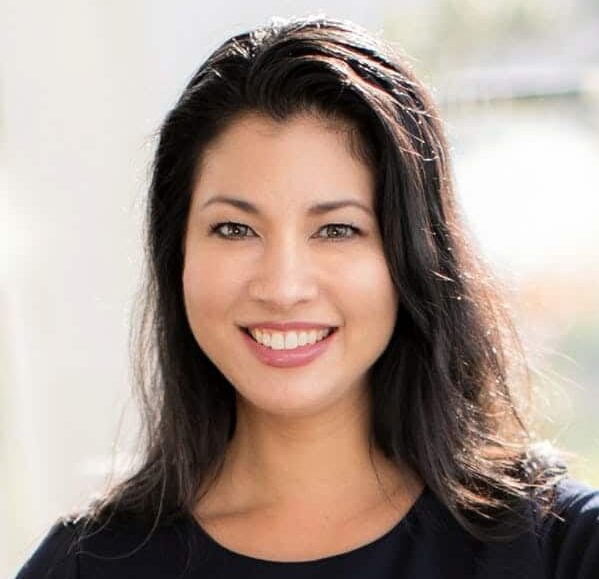
Recommendations
For Government
- Become familiar with and accept frameworks that value community and development progress as evidenced by changes in diverse forms of capital and assets – and their preconditions.
- Push boundaries and creativity to expand the menu of measures for what can qualify as progress or effectiveness for rural initiatives funded by your program, agency, or department – or, better yet, across your government sector (local, state, or federal).
- Measure assets and opportunities as well as needs. Fully recognizing community assets is a precondition for establishing a respectful and productive partnership.
- Design solutions to address the inherent limitations of federal data for communities and Native nations across the rural United States. The American Community Survey of the Census Bureau, a major data source, has limited utility in measuring changes in rural places.
For Philanthropy
- Engage in an ongoing dialogue with government funders about expanding and improving progress metrics for rural community and economic success.
- Formalize a field of practice around innovative frameworks to measure and mark true wealth and asset building.
- Support local nonprofits and governments to document qualitative methods that better illuminate ground-level success.
- Support training for local and regional development organizations to assess and deploy alternate data sets or community-change frameworks tailored to the priorities of local stakeholders.
For Rural Practitioners
- Familiarize yourself with community and economic development frameworks for measuring multiple assets and aspects of rural development progress.
- Have confidence that you know your community. Just because you may have little access to strong quantitative data (or may have conflicting data) doesn’t mean that you don’t know what’s going on.
- Firmly but diplomatically push back on external funder metrics of progress and success if they don’t meet your community reality. Share the reality as you see it and help funders understand your reasoning behind measuring what’s important to your community.
Action Story 1: You Get the Multiple “Whats” You Measure

When a community targets and measures results related to the full range of its priorities, it is better positioned to make and show impact across multiple systems.
The Aspire Program, which links workforce development, local housing, and family financial counseling, was created by the Northeast Community Action Corporation (NCAC) in rural Bowling Green, Missouri, in partnership with the Missouri Department of Corrections and the joint apprenticeship program of the Carpenters Union.
Through Aspire, incarcerated individuals learn and receive certification in carpentry while they build homes inside a local correctional facility that is located in the NCAC’s region. Participants reenter the community with marketable job skills, which increases their odds for living a productive life with dignity, and reduces recidivism.
According to Carla Potts, Deputy Director for Housing Development, “Too many times prisons are trying to [train for] things that, when [individuals] come out, are not marketable skills. So [with Aspire], they’ll come out with skills and with links to jobs and then they’ll enter the Union to become a journeyman carpenter.”
Aspire’s system connections deepen its impact in the community. The new homes are moved out of the correctional facility to provide housing stock for lower-income households in the area. The buyers receive financial fitness and homeownership counseling to qualify them for loans sourced from USDA that do not require a down payment.
“The only way I know that most people build equity is through a home,” said Potts. “A lot of people don’t have that opportunity or think they can’t, so these will be homes that will be less expensive, but they’ll also be homes that can come back out into the community, and help with the housing stock, because we have a serious issue with housing in our communities. So, we’ll measure in a number of ways, we measure training first, then jobs, and then we’ll measure housing and homeownership and building equity into communities.”
By focusing on those multiple indicators from the start, the Aspire effort helps leverage systems and collaboration to increase community vitality.
Measurement Principle Two: Do not dictate what to measure. Work with rural initiatives to define The progress indicators that make local – and mutual – sense
A constant theme heard from practitioners during the TRALE group discussions was that frequently funders, besides having a limited definition of success, envision estimates of what will constitute progress over a funding period that do not reflect community reality.
So, as a necessary companion to the first measurement principle, it is important that the rural community, region, or initiative do the defining, in relation to the community’s context, knowledge, and objectives, of what will constitute success markers over the time period of funding. Defining tangible outcomes must fulfill a community’s vision and understanding of necessary steps toward success – steps that at the same time can be understood as necessary to move toward a funder’s desired longer-term impact.
This is best done in conversation, and in relationship, where local knowledge is honored, and power is shared between rural initiatives and their funding or investing partners. Only the understanding that comes from discussing the reality that each party – both the rural effort and the funder – is facing will lead to the kind of flexibility that rural communities need to make holistic progress, and that funders need to change their own systems to keep them from locking rural communities, especially disadvantaged rural places, out of the opportunity for critical funding and investment.
Models show this can work. As Joe Short of the Northern Forest Center reported:
Our most productive funder and investor relationships are where we are mutually focused on the outcomes that we’ve defined in terms of community well-being, and where there’s flexibility in terms of the outputs that they’re looking for along the way. – Joe Short, Northern Forest Center
Rural practitioners also advise extending the application of this principle to a funder’s reporting requirements. Funders often require extensive extraneous data for reports that are time-consuming, extractive, and inhibit grantee effectiveness. For rural organizations, this can become an administrative burden. Even when they have only one demanding funder, short-staffed rural organizations can find that reporting requirements eat up a disproportionate – and unanticipated – amount of their budget. This is compounded for larger rural initiatives with numerous funding sources when their varying funders for the same initiative require different measurement or data reporting using different indicators and different systems.
The question for both parties to answer together is: What really matters to measure, now, at this moment of action? Many foundations are becoming more sensitive to “walking with” rural initiatives to negotiate what success over the course of a grant or investment will look like and how to measure it; some even logically check in to mutually assess progress and make mid-course corrections on the effort’s implementation and output and outcome expectations. Doing the one-on-one “retail” work of negotiating with rural initiatives is a steeper hill for state and federal government to climb, but surmounting it is essential if we are to steadily extend and deepen rural prosperity, especially in the most historically and economically challenged rural and Native nation communities.
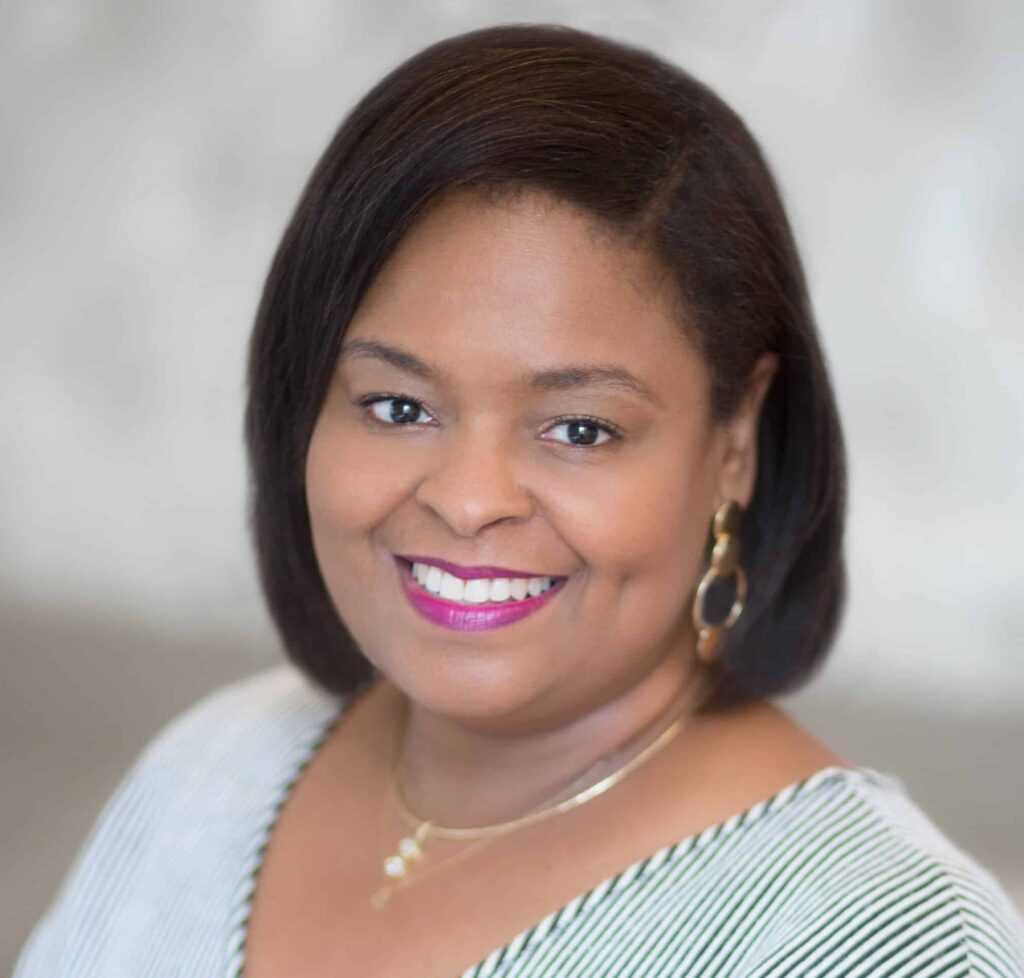
“There has to be mutual respect, and I think oftentimes communities value what funders bring to the table because of the connection to the financial resources that will come along with them. But that same respect isn’t always given or shown by funders who walk into a space acknowledging the [local] work… If you don’t demand that, it doesn’t happen.”
Felecia Lucky, Black Belt Community Foundation Alabama
“It seems to me that in rural communities there may be a different quality of conversation about what matters, because of the strength and importance of our social network and our quality of life, more so than how much someone makes, or their status.”
Ajulo Othow, EnterWealth Solutions
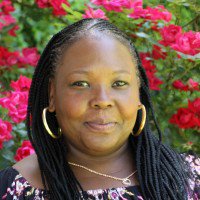
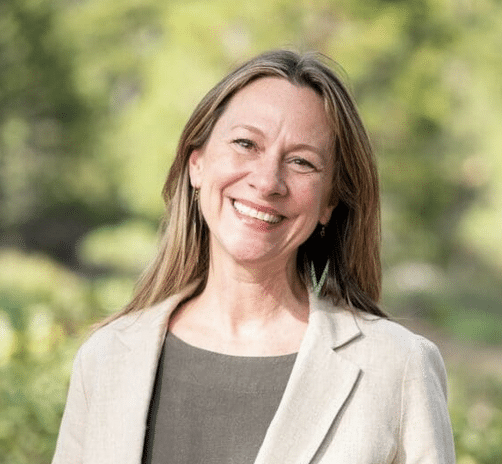
“There has to be mutual respect, and I think oftentimes communities value what funders bring to the table because of the connection to the financial resources that will come along with them. But that same respect isn’t always given or shown by funders who walk into a space acknowledging the [local] work… If you don’t demand that, it doesn’t happen.”
Stacy Caldwell, Tahoe Prosperity Foundation
“It’s much more likely that measurement is going to get done if you find ways for the community to assess itself and to understand what they can do to move forward. Your first thing is small wins, knowing this is iterative and a long game. The second thing is: use trusted and research-based measures that are focused on the vitality of communities and communities that have made it. What I am getting to is this idea of being unapologetically local about measurements, because if it’s not improving the local place and the people doing the work, then it is super extractive.”
Heidi Khokhar, Rural Development Initiatives
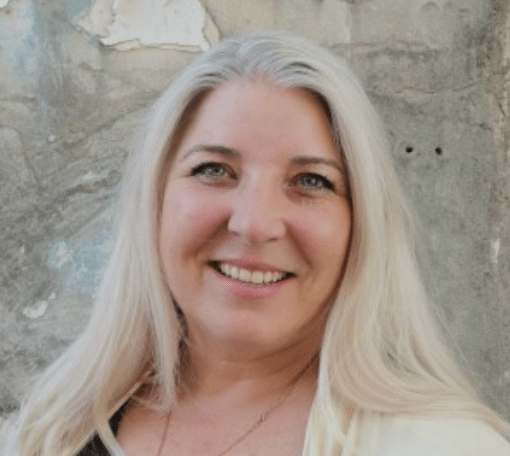
Recommendations
For Government
- Work with grantees/awardees to understand their varying contexts at the front end. Rural communities in different historical, economic, cultural, and geographic contexts can rightly value different factors as indicators of progress towards an outcome valued by a funder. Engage in a dialogue with rural and tribal development practitioners on the front end of an award or grant to understand what reality looks like on their ground and build shared consensus on desired outcomes.
- Together, select and customize useful and realistic metrics of community progress that make local sense. To determine required reporting requirements, negotiate and agree on indicators and measures toward mutually desired outcomes that are realistic in the local context over the funding time period. Use a broader menu of development progress indicators to help advance the discussion.
- Ask for, accept, and learn from any (optional) supplemental community-driven metrics. Encourage rural initiatives to report other measures or indicators that they think — or discover — are important. Analyze these across the portfolio to spark new thinking about measuring progress and to add to the menu of potential progress indicators.
- Conduct constructive mid-course consultations. Every project and initiative encounters unexpected bumps along their planned path, some that propel or slow their speed, and others that change their direction. Engage grantees and awardees at meaningful intervals to see how things are going, for the purpose of adjusting strategy and tactics, along with progress expectations.
- Discard data reporting requirements that are not useful for project implementation, impact, and learning. Native and rural grantees will be more productive when they can jettison extraneous, non-relevant data requirements.
- Emphasize grant selection and monitoring criteria over data collected to control fraud and misuse. Though they are critical to meet legal requirements and prevent corruption, over-emphasis on collecting information to gauge fraud and misuse can crowd out the data useful to understanding rural situations — and can even inhibit rural places from applying.
For Philanthropy
- Support efforts by rural initiatives, governments, and nonprofits to encourage public funders to adopt innovative, community-driven program metrics. In addition to direct engagement with public funders, use philanthropy organization and affinity forums and convenings to open doors for rural and Native community practitioners to speak directly to public funders and policy-makers.
- Support intermediaries to develop practical, community-driven measurement approaches and protocols. Regional, rural, and national intermediaries can help examine ideas, experience, and practices across place and further develop community-driven measurement methods and models that would be more easily accepted by public, philanthropic, and private funders — and have more value for local rural initiatives and progress.
For Rural Practitioners
- Advocate for and urge government and philanthropy to engage rural communities and practitioners in defining measurements toward rural prosperity — and accepting them. Show up in legislative and program design settings where rural and Native community and economic development is being discussed. Share your stories about what progress looks like — and the importance of community voice and agency in defining meaningful and productive measures.
- Start the negotiation. If the funder does not do it, when possible, set up an in-person or virtual conversation with a funder during the application process or at the front end of a grant or award to negotiate and establish indicators, measures, and reporting requirements that are useful, realistic, and doable for you.
- Report it anyway. Even if the funder did not require or accept it, report indicators and measures that you think are truly important and indicate progress — and explain why.
- Make some measurement noise on funder feedback and evaluation surveys. Make sure you include specific and actionable ideas on how to change and improve measurement and reporting requirements when given any opportunity to provide public, private, and philanthropic funders with feedback.
- Press philanthropy and field intermediaries to give you the support you need to measure better. Talk to peers about common conditions and concerns. Collaborate to pitch ideas that funders might support to develop better measures and measurement systems and to support the work it takes for you to measure.
Action Story 2: Changing Minds: The First Order of (Changing) Business
High impact outcomes can require a readjustment of mental frameworks for communities as well as funders. McIntosh SEED, located in rural Georgia but working in several southern states, has a long history of “walking with” communities to see new possibilities and grow their capacity
High-impact outcomes can require a readjustment of mental frameworks for communities as well as funders. McIntosh SEED, located in rural Georgia but working in several southern states, has a long history of “walking with” communities to see new possibilities and grow their capacity to succeed. In Mississippi, they partnered with local Black farmers to generate more income from their landholdings.
“Mindset changes have to happen first for communities to succeed,” according to John Littles, McIntosh SEED’s executive director. He notes that the rural Mississippi farmers were growing what they had traditionally grown, but it wasn’t generating income for those growers. “We connected the farmers with buyers and wholesale buyers, and they had a demand for a [different] specific crop. So, the farmers started growing for that demand.”
That was an economic change in them: Mentally the shift was “Well, we’ve always grown corn, but there’s not a market for corn; buyers want carrots, or they want squash.” Internally and in their community, they are accustomed to growing what they always have; they inherited that tradition. So, it is important to measure those types of mindset changes, seeing the business side of it, not just seeing that they liked to grow what they have grown in the past.
Littles reflected on the importance of supporting communities to change their mindset about what is possible as a precondition to other desired outcomes. “How do you stop relying on local government to change something in your community when you, you are the change makers in the community? I think most importantly, there has to be ongoing support for that and getting them in a space where they’re comfortable.”
Measurement Principle 3: Measure progress relative to the rural effort’s starting point at its current stage of development – not against an ideal “success” standard.
Every community has distinctive assets. And in each community, each asset is in different shape, depending on its quantity and quality.
For example, two rural communities may have the same access to plentiful water, but what water may be safe to drink in one but not the other. Two rural communities may have similar broadband availability, but in one there are people ready with jobs and training awaiting, and in the other, no one is ready to step into jobs. One region may have a very capable, collaborative, multi-community development organization with a good track record, while another has a small, isolated, under-resourced, single-issue group struggling to stay afloat.
When rural community and economic development work is launched, this variability matters for design and implementation, but also for the pace at which things can happen. “Apples to apples” comparisons do not capture or respect those unique conditions in the community taken together, nor the capacity of the organizations implementing projects that aspire to those conditions changing, by the end of the period of a capital infusion. A principle of measurement should be “first, do no harm.” When funding focuses only on rewarding “success” as measured by absolute numbers and not by relative progress, the funding and support infrastructure creates a bias against rural communities that are by definition smaller and take longer to produce large numbers, no matter their stage of development.
- Going for numbers – Many funders, whether public, philanthropic, or private, want their investments to tally up to large aggregate numbers. This drive for absolute numbers can harm rural places.
- Impact, which is measured relative to the starting point – The drive for “large numbers as impact” ignores how deeply a smaller result can benefit the place. No matter the size of the numbers, the real impact in the community can be great when progress is measured relative to that starting point.
- Recognizing the multitude of struggles and “incremental starting point” communities in rural America – Many do not start at the same baseline. Decades of underinvestment and discrimination based on geography, race, and Native heritage have produced conditions that have limited opportunities for growth and progress.
As TRALE participant Ines Polonius, CEO of Communities Unlimited, noted:

“Community-centered measurement! Measure a community’s progress against itself, not against an elusive set of data points from somewhere else. And make the measures relative to the size of the community. [Even when] you do end up measuring jobs … in comparison to what? I’ve had folks say, ‘Who cares that you created 53 jobs?’ The community cares that you added three percent to the total number of jobs in that community! I think that if you took those relative measures and put them in an urban environment, they would gather more attention… right? So how do we do a better job of measuring like that?”
Ines Polonius, Communities Unlimited
When more communities assess and articulate progress from their own starting points, and funders begin to understand what that will yield across places with varying starting points, more progress can be made in advancing toward longer-term development success, especially in lower-wealth rural places and populations.
Of course, one key conundrum this presents for funders is how to measure, aggregate, and report progress or success across many rural places with many different starting points that are using many different asset measures. One way to approach this would be to adapt the Whole Family Approach Life Scale (formerly called the Crisis to Thriving Scale), originally developed by the rural Garrett County Community Action Committee, which other Community Action Agencies (CAA) across the country are now using to help striving families set goals and measure progress based on each family’s starting point situation. This scale asks each family to self-report their current situation on multiple dimensions – financial security, education, health, housing, credit, social network, etc. – choosing from one of five stages (crisis, vulnerable, safe, stable, and thriving) for each dimension. Using this scale, each family defines their own starting point and chooses their own priorities over, for example, the next six months or year, and they can mark progress on a clear set of indicators. The CAA programs using this scale can then aggregate by reporting how many families made progress on their goals overall, and on specific goals, while also collecting information on which dimensions need the most attention – which helps the CAA design and tailor their services to meet local needs. Conceivably, a similar scale could be developed for different asset dimensions for rural communities, regions, or initiatives that would allow funders to aggregate progress and impact across place, despite not every place working on or measuring exactly the same thing.
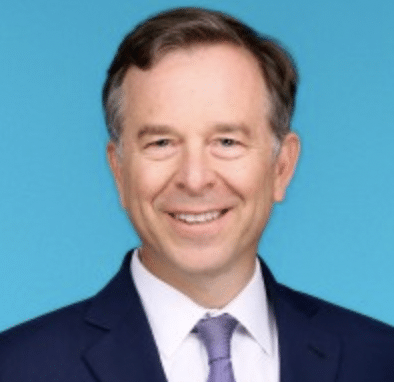
“I was a government funder for eight years in rural New Mexico, and I walked into communities thinking, ‘The poverty rate was X,’ or ‘This was the income level to get [to in] this program.’ And if I could have walked into a community knowing what that community felt was low income, or how to measure how they felt they were at, or their level of satisfaction with their economic situation, that would [have been] so much better.”
Terry Brunner, Pivotal New Mexico
“There’s such a lack of understanding that it’s going to be different for each community. A few years back, I was approached by a local entity that does community-based projects all over the world, but [not] necessarily in their own backyard. They wanted to do a project somewhere in one of the Native communities here in South Dakota – and it needed to be an economic development project. And I was so excited. We met for coffee and I shared an entire set of project ideas focused on Native artists. For context, 79% of our home-based businesses are arts-based, and roughly 51% of our people rely on a home-based business for income; that breaks down to about 40% of people relying specifically on art for income. They responded: ‘I think you misunderstood, we’re looking to do an economic development project.’ I thought, ‘Focusing on something that impacts income for 40% of the population isn’t economic development???”
Cecily Englehart, Dakota Resources

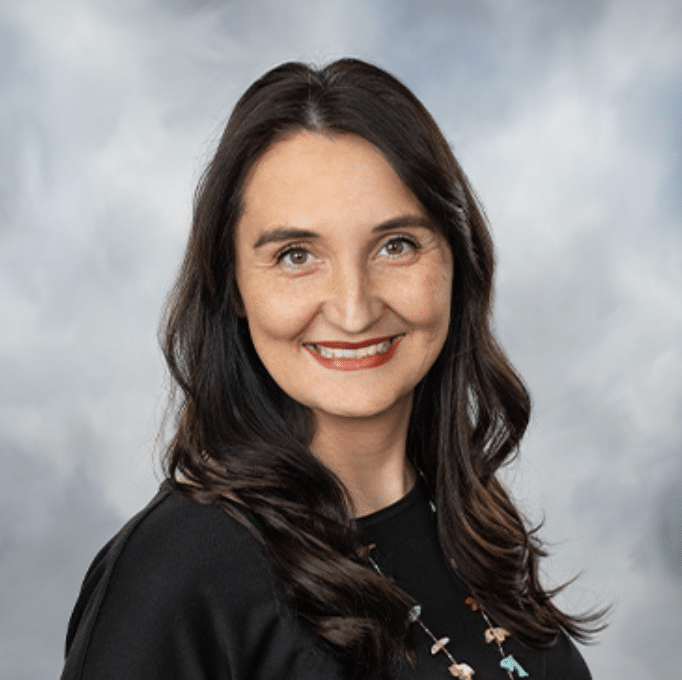
“How you perceive is how you proceed. I believe this and I witness misperceptions about Native America all the time. These misperceptions limit our opportunities and we use a lot of resources to break down these misperceptions just to get to a starting point with funders.”
Lakota Vogel, Four Bands Community Foundation
The Call to Action
For Government
- Measure progress from community starting points, not predetermined program or agency ideals of success.
- Be clear on the difference between measuring progress and measuring success.
- Take into account the time variable in setting progress expectations.
- Gauge rural progress as ratios in relation to the starting point in order to determine true impact.
- Check for – and work to eliminate – program-design bias against initiatives starting at different stages of development.
- Convene and collaborate – across government, private philanthropy, and rural development practitioners – to build consensus on frameworks and methods for defining community starting points.
For Philanthropy
- Support and test innovative methods to assess starting-point baselines as well as conditions that signify progress at different stages of development. Partner with intermediaries, grantees, government, or others to create practical and useful “stage of development” scales – like the Crisis to Thriving scale – to help rural initiatives identify their starting point on multiple community and organization dimensions and set objectives for progress on priority dimensions over a set time period.
For Rural Practitioners
- Know your own starting line. Develop a list of dimensions or factors that you think are important in describing the status of your community or region. Use both quantitative and qualitative data to help stakeholders and funders understand your starting point.
- Be a champion for your own starting line – and what progress looks like from that starting line. Trust that you know your community and articulate what progress will be for your effort at your stage of development.
- Report your impact as progress from your starting point. Employ ratios or percentage gains or changes in relation to your starting point to accurately portray impact on your local community, population, or economy.
- Carry out regular re-assessments to gauge progress and to assure that clients and communities are speaking clearly about local conditions, assets, and priorities.
Action Story 3: Centering the Start…to Finish
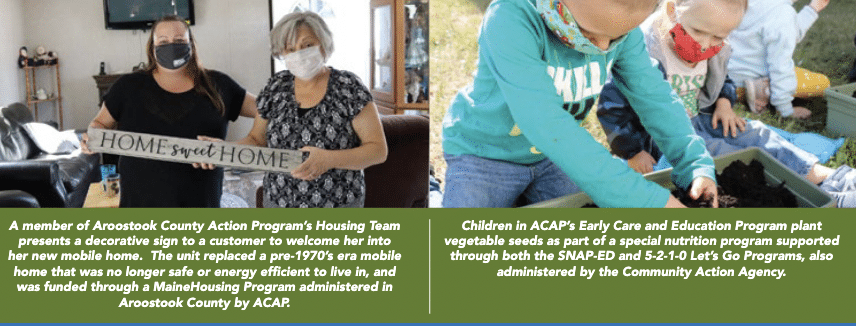
Committing to priorities set by the people or places that a program aspires to help can be a critical step for project integrity and defining true success.
Committing to priorities set by the people or places that a program aspires to help can be a critical step for project integrity and defining true success. Adopting the Crisis to Thriving Framework for holistic family development was a four-and-a-half-year journey for Aroostook County Action Program (ACAP) in Maine – a journey that brought dramatic transformation not only for striving local families but for the organizations that embraced the framework.
The ACAP Crisis to Thriving Framework includes 19 different domains that are critical ingredients in moving whole families into stable and then thriving conditions (e.g., food security, housing situation, school readiness, financial management, transportation, childcare). Families select their priorities, indicate their current circumstances, and then, with supportive coaching, move through milestones from crisis, to vulnerable, and then onward to safe, then stable, and, finally, thriving status. By choosing what entry point and what they want to work on first – families are motivated to invest in the work that they know will be meaningful to them.
Jason Parent, executive director and CEO of ACAP, said of adopting the framework, “We were definitely swimming upstream because you’re not necessarily doing it with the initial blessings of funding sources. You’re having to prove that this is an opportunity.”
The hard work of organizing family engagement and measurement around the framework in the early years paid off during the pandemic. Parent described the impact: “I cannot imagine how our agency would have served our community if this pandemic had happened before we began this transformation, and before we began to look at how we work collectively across the organization and tap into all resources and truly put our customers at the center of the work that we do. I’ve seen the difference that it’s made in the lives of the families that we serve, but I also see the difference it’s made in the staff doing the work. Our staff should be wiped out, exhausted from the additional efforts that we’re doing with the pandemic right now, but they’re feeling that they’re making the difference in that measurable success in families’ lives.” Starting with a strong targeted framework that identified and honored local priorities became the foundation of their measurable success.
Measurement Principle 4: Measure decreases in place, race, and class divides – and increases in The participation and decision-making that help reduce the divides – as inherent elements of increasing rural prosperity
Just as in urban America, rural communities and regions are deeply concerned with strengthening the social and economic “middle class,” which has been in decline in recent decades as wealth inequality has widened and contributed to civic, cultural, health, and power divides.
In rural areas, discriminatory practices based on place factors (size and remoteness) combine and overlap with class and race (and often gender) factors. Historical place, class, and race discriminatory practices and outcomes have shaped the conditions in many of today’s most challenged rural and Native nation communities, increasing gulfs both within rural regions and between rural and urban areas.
Class
Declines and changes in key industry sectors such as mining and manufacturing have gutted the economic engines of many rural regions that once provided living-wage jobs for families across generations, often with good benefits and without requiring a college degree. The disappearance of many of these jobs – and their replacement with minimum (or less) wage jobs lacking benefits – has created or deepened poverty in many rural places, even for people working full-time (or more). At present, 85 percent of the 353 “persistent poverty” counties in the United States are rural – evidence of a deep class divide between rural and urban/suburban America overall. At the same time, many rural areas with natural resource amenities have been attracting high-wealth families who have bought second homes or who, spurred by the work-from-anywhere COVID aftermath, are moving to rural areas full time for quality of life. This influx of “have” newcomers has driven up the cost of living for the long-time rural residents who were already struggling, and has amplified the economic, social, and power distance between local haves and have-nots within rural places. Tax structures like mortgage interest deductions that preference the already wealthy, the design of key social programs that hinder mobility for the poor due to benefit cliffs or justice system strictures, and disaster recovery systems that distribute resources to the better-off communities first – all of these deepen wealth inequality in rural America.
Place
Place discrimination also affects rural. It is a function of dismissing small community size and geographic location or isolation, and of the cultural and demographic dominance of a nation’s population that is now 86 percent metropolitan (2020 Census). This domination is commercial, cultural, and often dismissive of the “flyover country” that is the primary source of food, materials, energy, water, and other resources on which the entire nation depends. This can make a dramatic difference in access to resources. Place discrimination shows up in the qualifications and details required when applying for public, private, or philanthropic support or investment. For example, as described earlier, some funders require a population size or level of “raw number” expected outcomes not achievable in rural places, essentially locking rural applicants out; others require complex application and reporting information that low-resourced rural places and organizations with few staff or only volunteers struggle to manage. As a result, rural places, especially those most disadvantaged, “disappear” from the radar screen of funders and service providers.
In the nation’s low-density rural places, for example, health care is more expensive, fire departments are staffed completely by aging volunteers, and internet access is too often absent, substandard, or unaffordable.
Race
Race as a structural force and driver of historic and current economic and social inequity is increasingly understood and acknowledged. But most people in the United States still think that “race” is an urban issue. Too few grasp that one in four rural people are people of color, and that they, along with immigrants from many nations, now account for the bulk of rural population stabilization or growth. The connection of race to place and class in rural areas cannot be overlooked: Outside of central Appalachia, the vast majority of the rural persistent poverty counties noted above are overwhelmingly communities of color – Black, Latinx, Native, and many immigrant people. Overall, rural populations of color suffer higher poverty rates than their urban counterparts. In short, for rural and Native communities, place and class discriminatory practices have only deepened the historic grip and impact of racial discrimination on economic, health, and social inequality.
What does this have to do with measuring rural success?
First, from a process standpoint, it calls for policy and investment designers to compare the place, class, and race profile of the places and initiatives they support versus the ones they miss; to analyze if it may be due to preferences embedded in their scoring or criteria for funding; and to conduct special design for and outreach to the “unreached rural” in every region, race, and class.
Second, to change decisions and design, it calls for rural communities and organizations themselves, as well as foundations, government, and private grantmakers and investors, to diversify (and measure) the composition of their decision-making groups to include rural leaders, rural low-wealth people and communities, and rural Black, Native, Hispanic, and immigrant people – as a critical step toward dismantling practices that have created and deepened wealth and social inequality within rural and between rural and urban places and populations.
As one TRALE participant, John Cooper, Jr. of Texas A&M’s Institute for Sustainable Communities put it:
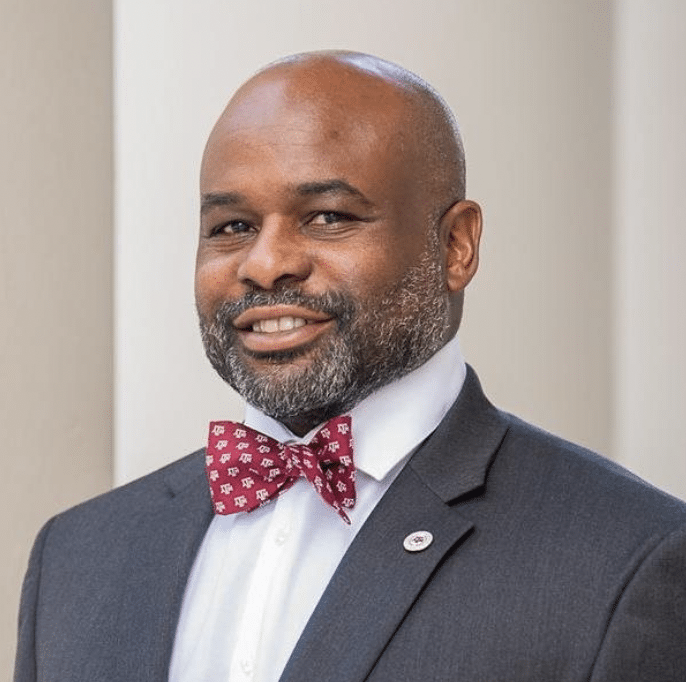
“The outcome is the quality of the strategies, but it’s also the quality of the process, so there’s procedural equity in everything we do. We want to make sure that the teams that we put together to work on plans are representative of the places we’re working. So, we want the movers and shakers, but we also want the moved and the shaken, right? The people who stand to be most impacted by the work we do – we come to them as co-learners, as partners, and we see them as leadership assets in the places that we work.”
John Cooper Jr, Texas A&M University
Lastly, it calls for consistently measuring decreases in inequity – across race, place, and class, both within our rural communities and Native nations, and between rural and urban places and populations – as a standard outcome that indicates progress toward rural prosperity. Measuring equity requires absolute measurement (the aggregate increase in financial wealth, for example) and relative measurement, such as change in the gap between Black and white median household income or high-wealth and low-wealth households in a rural place, or between rural and urban in a region or state. Decreases in these economic, social, and cultural divides are essential to strengthen both rural and national prosperity.

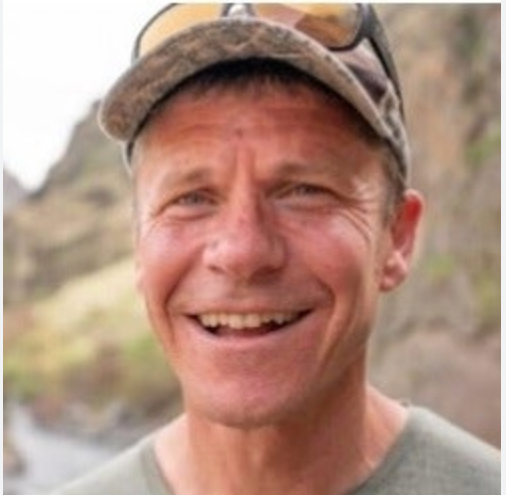
“It’s really important that jobs are year-round with wages and benefits that support a family within the cost structure of the community we live in. I don’t think that’s always captured in the economic reports, nor in the criteria shaping federal programs. Too often these focus on appreciation of household wealth or income, not locally generated wages, and this appreciation is often driven by a lot of other revenue. This is creating real distortions – and much greater inequality – in our community between the year-round residents who live and work here and other residents who have only recently bought homes.”
Nils Christoffersen, Wallowa Resources
“To us, rural is a culture, and when we define it as a culture and make it a topic around equity, I think it’s harder to marginalize rural people in rural places. [A] huge part is just ensuring that people understand who we are and that we have representation in those different buckets – to not only see our successes and see our wins, but to understand how to digest our data and make it a story that’s positive and not weaponize it against us.”
Justin Burch, Delta Compass
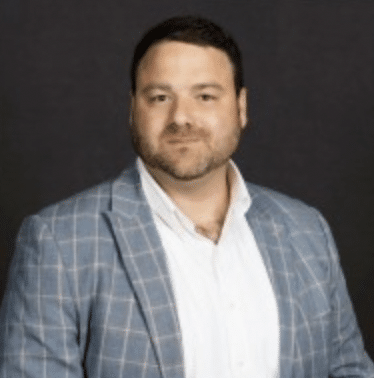
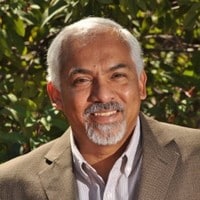
“The Latinx community is 85% of the county population, unemployment can be as high as 30%, and some of the challenges that we have around health and environmental conditions are due to the toxic seabed that we have here that has been collecting fertilizers and pesticides from agriculture. We have a booming agricultural industry, but now that the Salton Sea is drying up, it has exacerbated the existing health challenges in the county – one in five children have asthma, and we’re number one in the U.S. for diabetes deaths. We are working with the smaller communities that are adjacent to the Salton Sea… helping them have a stronger voice and visibility, because basically they feel they have no voice.”
Roque Barros, Imperial Valley Wellness Foundation
“In the WealthWorks model, we know that the ‘who’ matters, and that livelihoods and ownership matter. So, are we measuring the number of employee-owned enterprises in the region versus just businesses? Yes! We measure the number of social advocacy agencies in a region that helped create social capital and build social capital and cultural capital based upon NAICS codes. Instead of earnings, we measure wage gaps. Gender wage gaps, racial wage gaps – how about we measure that instead of just the amount that people are making?”
Cheryl Hills, Region 5 Development Commission

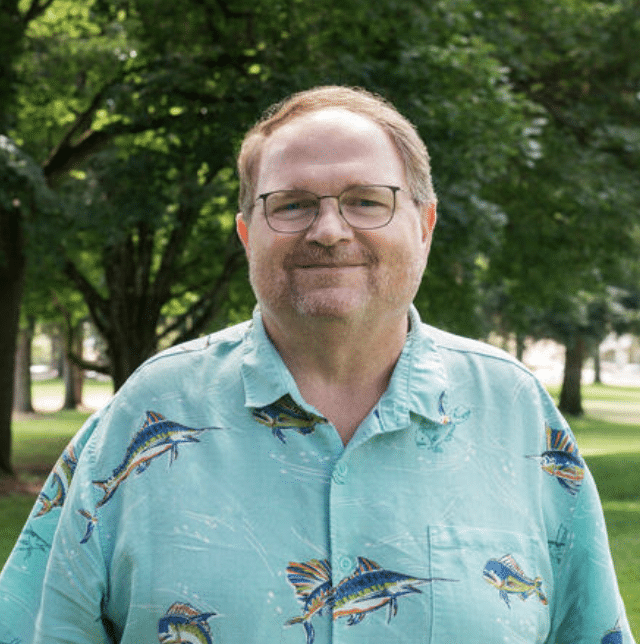
“Any time we define what success is for somebody else – I find that problematic. So one of the things that I’m impressed with, coming from the state government into a Community Action Agency, is that a good portion of the Agency Board of Directors is made up of the clients who we serve. This enables us to empower them and place them in decision-making positions. I believe that is important.”
Douglas Beard, Northern Kentucky Community Action
Recommendations
For Government
- Measure yourself first. Assess the distribution of grants and investments. Regularly analyze and compare the economic, place, and race demographics of where your funding or lending is going – and is not going. If there is an uneven distribution to some rural areas or populations, evaluate reasons why. The “left-out” are organizations, communities, and businesses that do not compete successfully for funding, or that do not apply at all because of the complexity, often tied to internal processes, or the small size of the pool of dollars, and smaller and more remote. They can easily fall off the radar screen of program designers.
- Check for equity bias in application procedures and design. Look carefully at eligibility requirements. Are thresholds causing rural areas or pockets that are not accessing development resources, innovation, or program design to reach the “left-out”?
- Ask for equity process indicators and measures. Effective planning to reduce inequity requires seats at the table not just for the more obvious stakeholders but also for the under-represented. A process that includes broad rural place, class, race, and cultural representation can surface inequities in opportunity access and outcomes.
- Ask program staff or managers to measure changes in inequity. Programs that are more equitable in design and implementation – including who they reach and serve – will produce more equitable progress outcomes, while those that are not will maintain or exacerbate inequities.
For Philanthropy
- Support the creation and maintenance of national, regional, or local civic leadership diversity databases. Where technical and geographic expertise exists, invest to help reveal and make visible where inequities and inequity persist.
- Support methods and pilots for analyzing and measuring equity in rural places. Taking on how to measure decreases in inequities – and increases in equity – across rural regions can help facilitate that measuring and bring attention to its importance.
For Rural Practitioners
- Know your local equity baseline. Estimate what the particular equity – or inequity – condition and challenges are in your community, in relation to other places in your region or your state. If conditions, how does the current state of affairs compare to others in your county or town?
- Ask the “reducing/increasing equity” question whenever you design a project or program. Explicitly state whether you expect what you are proposing to reduce the inequities that you have identified, or if you expect it to keep things the same.
- Evaluate equity conditions within your own organizations. Ensure that your own boards, teams, and initiatives reflect and represent your community’s diversity – by race, class, gender, geography, or other relevant factors.
- Use and publicize your equity analyses and indicators to advocate for more inclusive civic leadership. Document changes so your community and partners can see progress or movement of any kind.
Learn more about dismantling discriminatory practices that affect rural people, places and economies rural with the Thrive Rural Framework. This new tool outlines the building blocks needed to achieve rural prosperity. It addresses the unique types of systemic discrimination due to race, place, and class that people in rural communities and Native Nations face.
Action Story 4: The Value of Access and Participation for Equity
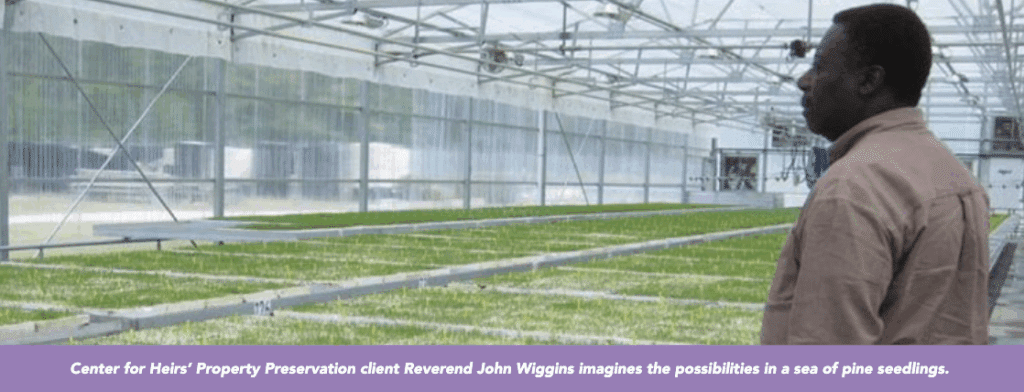
Moving toward equity requires shifting – and measuring shifts in – race, place, and class divides, including in terms of access to systems.
Jennie Stephens, executive director of the Center for Heirs’ Property Preservation in South Carolina, tells what happens when expanding (and measuring) access is a priority: “Forestry is a $21 billion industry in South Carolina, but there are very few people of color that are either working or connected to the industry. What we were able to do was to create a system that allowed people of color to access the forest industry. It was a public-private partnership, so you have the nonprofit who’s the trusted organization in the community, who then invited in funders or representatives of the United States Department of Agriculture (USDA). We know about USDA and people of color; it’s not been a good relationship in the past. And so the ability to create a system so that people of color would learn about forestry, know the resources, know that there was a forestry association, or know that there were funds available from USDA, increased the number of local people of color who are now engaging in forestry enterprises.”
The work has had numerous – and measurable, though not always counted – equity outcomes beyond the family wealth-building and environmental stewardship benefits, according to Stephens. “My board chair, who is a participant in our sustainable forestry program and is a retired principal, just sent me a video in which the USDA Natural Resource Conservation Service (RCS) recorded and used her as their spokesperson. We have landowners who are serving on national committees for forestry, or in our state. So, the fact is that, yes, they’re generating more money because income is important. But there are also those intangibles where they’re able to be invited to tables that they would not normally be invited to sit around because (1) they didn’t know the table exists, and (2) the people who were already at the table didn’t know how to access them.” Measuring the increase in access to and influence in systems that generate wealth and prosperity is as important as measuring any resulting wealth itself.
Measurement Principle 5: Identify, value, and measure effective collaboration as progress toward rural prosperity
The proverb goes: if you want to go fast, go alone; if you want to go far, go together. To make significant progress on rural community and economic development and health issues, it is likely that you can only ever get “there” if you go together. In essence, going it alone is rarely even an option.
When a big challenge or opportunity arises (or persists), a rural organization can only do so much by itself. Likewise, an individual rural community can rarely make solo progress on an issue or opportunity when it really affects an entire region – as does, for example, the potential opening or closing of a significant area business, the availability of hospital and medical services, road quality, internet coverage and standards, or the presence and affordability of childcare slots. The impact of any of those is important to multiple communities and populations in a rural region, so addressing it must call on their multiple assets and abilities for effective action.
Collaboration across organization and place requires a sturdy organizational framework for acting together. Partly due to greater density and proximity, these tend to be more natural or common in metro than in rural areas – for example, metropolitan transportation authorities, regional business associations, active councils of government, or metro education and workforce consortiums. In rural places, neighboring jurisdictions are further apart, the tax base that might be tapped to work together is small or nonexistent, and large institutions that might pull together or anchor regional cross-sector collaboration – like universities, hospitals, or major foundations – are scarcer. There is no government of the region, no shared financial resource base to invest together, no one with the responsibility to analyze the geographic range of an issue, bring people together, and make decisions for action.
TRALE participants underlined that rural community and economic development actors essentially have to make the case for the importance of these functions – and then invent how they are organized and where they sit; otherwise, individual organizations or communities in a given region may end up working at cross purposes or simply not have the capacity or resources to make enough difference. Where they do succeed, they take on the qualities of a Rural Development Hub, a role played by different types of organizations in different rural places (e.g., community action agencies, community foundations, community development financial institutions, colleges, free-standing regional non-profits, chambers of commerce, among others). Regional councils of government or economic development districts, which draw support from member municipalities, the U.S. Economic Development Administration, and some states, can also foster regional collaboration and action.
In short, when it comes to advancing economic and community development, rural efforts typically have greater impact when they involve networking and working together across organization and place. Collaboration is particularly critical across low population density and lower-wealth regions in order to leverage resources and build critical mass for project implementation.
However, effective collaboration typically takes more time and effort than going it alone. In rural, collaboration multiplies in complexity due to distance, fewer organizations or local governments with sufficient paid staff whose jobs can support it, and things as “simple” as poor internet connectivity. Practitioners in the TRALE made this point repeatedly: Collaboration is critical to progress and it is rarely supported financially.
Measurement Principle 5: Identify, value, and measure effective collaboration as progress toward rural prosperity.
Yet, as Ta Enos, CEO of Pennsylvania Wilds, put it, the effort to collaborate can make the most difference over time in advancing toward better rural futures in a region:
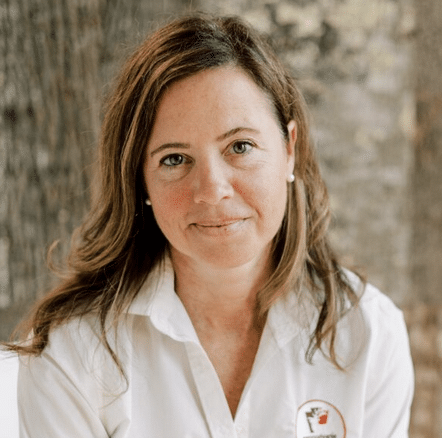
“The partnerships we’ve built across municipal boundaries, different industries, and the public and private sector have been transformational. They’ve allowed our region to accomplish things together that we never could have alone. The importance of relationships, of building trust, of meeting with people face-to-face so they know who you are and what you’re about and that you respect them enough to listen, cannot be understated in a rural area. You have to take the time to show up, literally, or it won’t work. Partnership work is never done, and it takes real resources to do it well.”
Ta Enos, PA Wilds Center
Other key points included:
- More funders are beginning to understand the importance of collaboration, and some even now require it. But few support what it takes to do it, especially the extra effort and cost it takes in rural places.
- When a rural collaboration is supported by multiple funders, they rarely collaborate themselves to reduce the (often conflicting) paperwork and reporting burden for the rural collaborative.
- Sometimes collaboration exists only “on paper” designed to meet the funders’ definitions of collaboration; this may either (a) not be the collaboration that is needed for the particular project, or (b) be represented as a collaboration by some applicants via local endorsement letters and the like, but not play out in reality.
What does this have to do with measuring rural development progress toward success? The TRALE process suggests that effective collaboration is critical for steady progress toward wider and deeper prosperity. But “effective” requires that the collaboration must be built on real relationships, shared understanding and goals, broad participation and decision-making across community and population stakeholders, established methods and structures for working together, and leveraging resources – all in ways that can set the rural area up for even more progress in the future. This can be measured as meaningful, as evidenced by assessments of collective impact and similar efforts. Surely there is much work to be done to facilitate and design good ways to measure aspects of collaboration as a critical ingredient of rural prosperity progress.

“Take Chicago, there’s a popular workforce collaborative and there’s been a lot of dollars that have been invested in that collaborative to get all the different stakeholder buckets working together and they have established common metrics and ways of sharing that data. We just don’t see that investment in a lot of rural places.”
Justin Burch, Delta Compass
“Are anchor institutions collaborating at all? Are they doing things in partnership or is everyone just sort of doing their own thing? One thing that we constantly hear from communities – and where we start to see the magic actually start to happen – is when communities say, ‘Wow! Our local government never really had any strong connection with our schools or our business community or this sector.’”
Deb Martin, Great Lakes Community Action Partnership

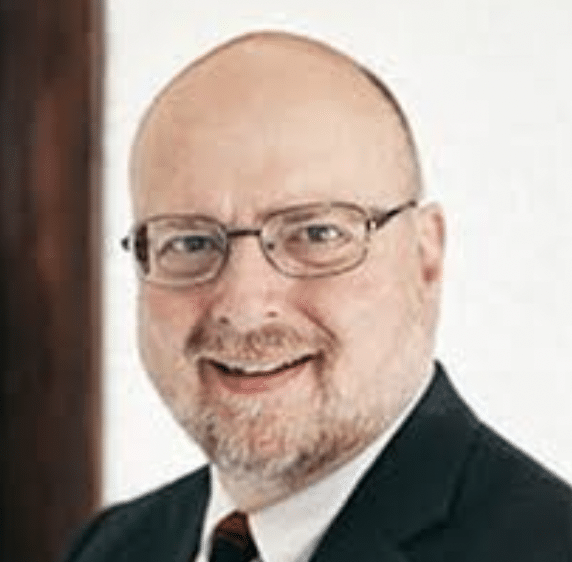
“[In rural America] nobody has the resources to go it alone. One of the
John Molinaro, Appalachian Partnership
things it takes to do better – that almost no funding streams are willing to pay for – is collaboration. They’re willing to pay for that particular project, but the glue that holds it all together is just probably the most difficult piece to find support for in rural communities.”
Recommendations
For Government
- Ask grantees and awardees, when relevant, to report what they consider to be indicators and measures of useful and strengthened collaboration. When grantees and awardees understand that collaboration is valued by resource providers, it can bring the importance of collaboration to the local action table. Indicators can include new or recurring partners in an initiative, the range of capacities in a collaboration, additional resources leveraged due to critical mass, evidence of increased trust, increased reach with services, cost savings due to economies of scale, and many more. Analyze and learn from what is reported over time – share the learning and use it in ensuing program design.
- Inventory the regional collaborations of rural grantees and awardees – and their comparative outcomes. Both state and federal governments have programs that foster regional thinking and, at times, collaboration. For example, the federally chartered Appalachian Regional Commission, Delta Regional Authority, Northern Border Regional Commission, and Denali Commission each focus on a geographic area with significant shared economic base, natural resources, and cultural/historic factors. An analysis of their funding that has gone to multi-partner collaborative vs. individual-organization efforts could reveal the key aspects of collaboration that make a difference (or don’t) in progress and impact.
For Philanthropy
- Everything in the For Government columns, plus:
- Support the documentation and analysis of rural-focused collaborative efforts. Seasoned rural-based practitioners as well as national rural experts note the need for well-organized and supported collaboration to make significant progress on rural development and equity. This is based on their experience and aspirations, but it is largely under-documented. Organized evidence would help. Support analysis of collaborations and identify the factors that signal less or more effective rural collaborations – among national rural-focused organizations, between national networks and local organizations, and among organizations at the local and regional level.
- Support the identification of indicators and collection and use of data related to rural and Native nation collaborations. Garnering the resources to collaborate is already challenging for rural initiatives; measuring collaboration and its effectiveness is a step beyond that. Facilitate dialogue, research, and learning pilots or cohorts to identify collaboration indicators and measures – and how a menu of data and measures might be standardized – to be universally helpful to organizations and collaboratives.
For Rural Practitioners
- Identify the elements that make your close-at-hand collaborations work (or not) – along with the resulting impact. Work with your collaborating partners and stakeholders in real time during your initiative to do regular after-action reviews to document what is working in a collaboration, the difference it makes, and what you have learned to do differently next time. For example, does setting out responsibilities for different partners in a signed MOU make a difference in partners delivering on what they promise? Does having someone responsible for organizing meetings and agendas and monitoring deadlines make a difference? Funding for certain elements of collaboration? Making sure you have a collaborating partner that can do X or Y?
- Assess the impact of your individual organization efforts, as compared to local, regional, and over-the-horizon collaborations. Use what you learn to document and tell the story of the leverage and impact you have been able to achieve through collaboration relative to acting all on your own.
- Understand your network connections and their potential for collaboration. Over time, the links that you have in your network – both the strong and the weak ones – make a difference in what you may be able to accomplish, including through collaboration. Consult a useful guide book like Net Gains: A Handbook for Network Builders Seeking Social Change for an introduction to understanding the formation of networks and how you can begin to track and measure your connections.
- Include indicators of collaboration and its impact in reports to funders, whether required or not. Help public, philanthropic, and private sector funders and investors understand the importance of collaboration by reporting how you measure/assess it and the difference it has made in your action and outcomes.
Action Story 5: The Culture and Power of Building Collaborative Muscle

Vibrant Hawai’i, focuses on catalyzing collaboration – rooted in the Native Hawaiian cultural value of ‘Auamo Kuleana: To shoulder one’s human rights, responsibilities, and privileges.
Executive Director Janice Ikeda shares insight about how interdependence and resilience are intertwined, “Resilient communities are connected communities. One of the inequitable untruths that keep us siloed is the idea that to be successful, you should be good at everything. Farmers are told that they need to build capacity in grant writing and grant management, but we don’t tell business leaders that they need to know how to grow our food! We must return to the old way of building resilience in communities through collaboration and relationships, where people had an excellence and a mastery in something and then connected and relied upon each other.”
Vibrant Hawai‘i’s value for collaboration scales up in remarkable ways. When they partnered with farmers, food distribution hubs, and the local county government on a $1.3 million USDA summer feeding program, 4,000 children were able to consume food produced locally. However, waiting six to eight weeks for USDA to reimburse the invoices submitted by the local actors was a challenge. “That’s a long time for farmers to wait to get paid back for their produce,” said Ikeda. “The only way we were able to pull it off is that one of our partner food distributors agreed to wait for their payment until we all got reimbursed. If not, we would have had to forego this entire opportunity for our Island because people just don’t have $1.3 million in the bank. And these 25 farmers would not have earned $700,000 in income.”
Such collaboration, according to Ikeda, is grounded in reciprocity and the idea that everyone has abilities but needs opportunities to express them. “To measure how we are increasing human capital, we’re developing digital badges and a platform that links folks across communities. Digital badges are awarded for skills and contributions that are not typically tracked or made available through traditional systems of education, but are still valuable and needed in our community, like community health worker skills, business startup, and aloha ‘āina (love for the land). Our PAPA (Passion and Purpose Academy) is shifting the narrative about who is a teacher and who is a learner. We are going back to our traditional ways of being able to fluidly move between both roles at different – and all – times of your life. More importantly, PAPA challenges us to reframe who can contribute experience and expertise toward a thriving community.”
Measurement Principle 6: Identify, value, and measure signals of local momentum as progress toward rural prosperity.
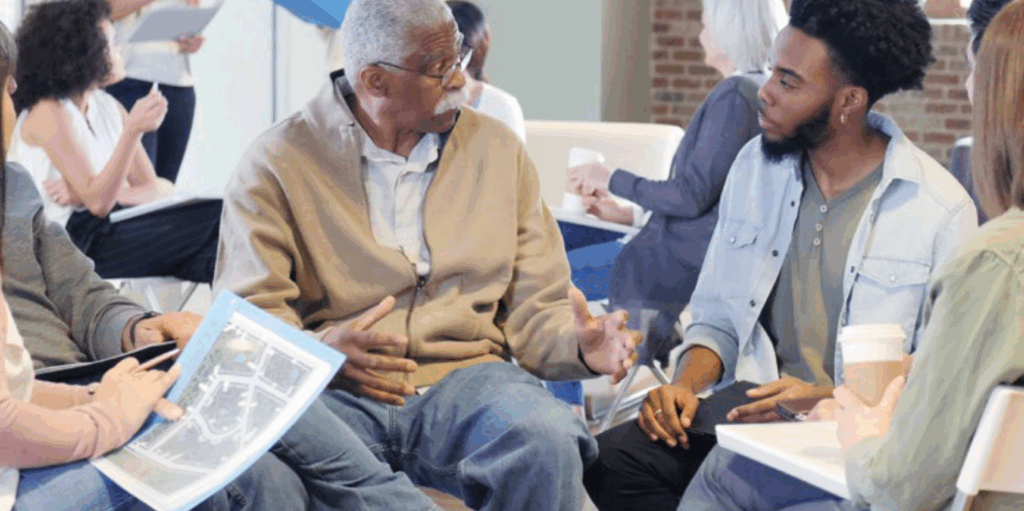
One after another, TRALE participants talked about the importance of seeing and feeling “momentum” as real evidence of rural progress and success. Momentum can be very tangible in a community, even though the signals may seem unimportant or small to outsiders.
It can be compared to the way that the tide changes toward the underdog team in a big football or basketball game – before the underdog then goes on to win the game (or at least make it very competitive). Recognizing and celebrating the small but significant signs of momentum are critical to building community energy and confidence; momentum inspires the optimism and collaboration essential for fueling a better future.
Momentum is fuel for progress at any stage of rural development. It can begin as a mindset change – in local leaders, organizations, or any community member – that must take place to end up in action. A common example is changes in the appearance of Main Street: One business refreshes and cleans up its storefront façade, window displays and streetscape, which inspires others to do the same, which inspires more people to come back downtown. Changes in youth participation also can spark it: An effort to engage youth after school in a community-building effort leads them to volunteer for other efforts or start their own projects, creating visible change and participation. Fresh faces and energy in elected or organization leadership who replace a grown-stodgy local establishment, or schools from neighboring districts abandoning bitter rivalries to work together on key issues – these and more can signal momentum change. And that sense of “change” is the value of momentum: Something new or different happens that in essence creates a change in direction or hope that renews, refreshes, and propels more productive action.
Momentum is also fundamentally important to retaining and sustaining population in rural (and urban) places over the long term. Roque Barros, who has spent years as a community organizer and organizing mentor across the West and is now CEO of the Imperial Valley Wellness Foundation, recognized it as what he has heard community members call “hope”:

“You know, our dream was to always move out of here, but now we’re staying here, because now we have hope that we can make things different, and things will change for us.”
Roque Barros, Imperial Valley Wellness Foundation
TRALE participants indicated that increasing youth and young adult engagement are particularly good indicators of momentum and merit special attention because they increase children’s and young adults’ belief – and local hope – that they can find a way to stay or move back one day after college or military service to raise their families. Others mentioned assessing a community’s sense of pride in itself, or a “stick-to-it-ive” willingness among locals to invest in a community, often without expectation of external support or reward – for example, by starting or donating to a permanent community endowment fund. And then there are those beautiful new planters on the street downtown…or the derelict building eyesore that is no more.

“We need to track and communicate momentum that has been spurred by our investments. For property redevelopment, one of our metrics is looking at other investments in that community that we had nothing to do with directly. In Lancaster, New Hampshire, somebody else has bought a couple buildings down the street from the one we’ve been rehabilitating – to do it on their own. You can argue whether there’s causality or not, but…the market was not doing this on its own. We jumped in, maybe did something crazy from the market’s perspective, but it’s creating some momentum: People are seeing what was an abandoned building turn into a beautiful building. Now we have six families living right in the heart of downtown and other things are starting to happen. We need to point to that and say ‘Look, these are catalytic investments.’ Putting some proof and some numbers to that is important because it gets to scale.”
Joe Short, Northern Forest Center
“Our native youth, of the ones I was able to survey on Cheyenne River, feel optimistic that they can do better than what their parents had access to. That is a direct reflection of how recently colonization happened to us. You can tell from your grandma going to [non-Native] boarding school that ‘I’m going to have a better access to education or better opportunity access than what my grandma did.’ I think that optimism from youth could be a good measurement of success in rural America.”
Lakota Vogel, Four Bands Community Foundation

Recommendations
For Government
- Ask for measures of the vital signs of momentum. In grant and loan applications or reports, ask for evidence, when present, of significant (whether small or large) signals in effort, participation, community appearance, or local perspective that may indicate a change in future direction, energy, or potential. Just by asking, funders validate the importance of momentum – and likely increase the chances that the initiative will pause for locally constructive reflection and celebration.
- Consider momentum when making decisions and reporting impact. Over time, analyze what is reported, to learn how momentum might best be assessed or taken into account as part of decision-making about your funding portfolio, and to understand and report its full impact. Share what you learn with rural initiatives and other funders and intermediaries.
- But don’t turn momentum into a pre-requisite or requirement. Instead, understand its role and value – and your role in it. Recognize that simply being funded can generate momentum, especially in smaller, invisible, overlooked initiatives and communities. When it comes to rural initiatives and areas in early stages of development, especially those that have tried to get organized and off the ground fueled only by local grit, the simple fact of receiving funding can spark momentum well beyond its dollar value.
For Philanthropy
- Everything in the For Government columns, plus:
- Understand, invest in, and measure the organizational and collaborative design and capacity that is key to building community momentum. Resource-strapped rural organizations need staff, systems, and funding to do many things. In any situation, some of those things are more likely to have a higher momentum or “community ripple” factor than others. For example, when one regional rural CDFI had funding for interns, they partnered with a local community college to have their students build websites for tourism-related businesses and organizations across the region. They could instead have used those interns in-house to answer phones and emails or do some research – all good. But by producing visible and practical value for existing and potential CDFI customers, and by partnering with the local college, and by engaging youth in community business, more happened that turned the tide of hope for what became a more connected and creative tourism sector. Likewise, internal mindset changes can change momentum: Supporting breaks, sabbaticals, peer-learning reflection, and professional development for burned-out organization leaders can be critical to producing tangible momentum changes.
- Cultivate – and measure – community momentum. Place-rooted funders can use the indicators of momentum suggested by practitioners throughout this Call to Action, in the indicators of the 20 Clues to Rural Community Survival, or in the Measuring Community Capacity Building workbook, to shape an understanding of what momentum might look like in your community. Modest funding that strategically supports small mindset- and momentum-forming projects can have a big impact in the future, especially if measures of the momentum-outcome of those investments are brought to light. (Could there be a “community momentum dashboard”?)
- Commission surveys and analysis of rural and Native youth priorities and hopes. Youth and young adult perceptions of their communities are key indicators of community futures. Surveys and analysis can spark action critical to building momentum and commitment to the future. Besides surveys, support academic and nonprofit analysis of disconnected youth conditions and impact. The Measure of America Youth Disconnection Series report, A Decade Undone, a 2021 Update, lays a good groundwork for deeper analysis at the state and rural regional levels and with Native nations.
For Rural Practitioners
- See “Cultivate – and measure – community momentum” in the For Philanthropy section for ideas. Would creating a “community momentum dashboard” be helpful in your place to change mindsets and spark more hope?
- Document and report the micro-victories that signal momentum. The fact that an action is “small” doesn’t mean it is insignificant. The emerging story of changes in mindset, a civic springtime, or a new or renewed activity in town can be harbingers for much more to come. Report such signs of momentum to funders and those who love or live in your place, as well as others in and outside community. These local or local organization commitments is just as real and significant as “hard” outcomes of new jobs or buildings.
- Proclaim your small-but-real momentum victories to your own community and to outsiders. They can renew community narratives, which can add up to leveraging bigger goals and partners for collaboration. It is important that you declare and make known small local-momentum victories; no one else will do it for you.
- Regularly survey or consult with your community youth and young adults. Young people are deeply aware of assets of their hometown and what could make it better, including things that have become invisible to adults. Their global perspective on what could make things better – and the energy and desire to contribute – can be precious. Surveys done over time can show trends and be one operational indication of changes in pride, hope, and momentum – and lead to action ideas.
Action Story 6: The Power of Momentum to Power Greater Good
When communities set and act on their own priorities, momentum builds and leans forward. This was in action when Trust for Public Land (TPL), a national advocate for public space of all kinds, partnered with community members in South Wenatchee, Washington, a small town in the heart of the largest tree-fruit-growing region of the nation.
In 2014, TPL approached the South Wenatchee community, whose population is 67 percent Hispanic, with the idea of restoring very small parks to provide better quality public space where it was needed. Community leaders, however, also wanted better civic representation, safer streets, and access to health care. Residents advocated for hiring community organizers; TPL agreed and underwrote that with a grant in 2015.
“It was a challenge for TPL to embed community priorities in the redevelopment of a one-acre park. It was in a community that had gotten a lot of empty promises from others,” said TPL’s Cary Simmons. After organizers listened and stayed present in the community, a strategic principle emerged: Start with a small lens that can become a bigger lens. TPL realized that communities create momentum by defining their own priorities and marking incremental progress. Simmons realized that this flipped the script for funder/community relations, “We funded community leaders to lead us.”
In 2018, following their engagement in redeveloping the park, local leaders in the neighborhood formed their own organization, Parque Padrinos (Park Godparents), and received a second grant from TPL. Small, incremental change was part of the new organization’s structure: On joining, each member committed to take on a specific contribution, such as hosting an arts class or teaching reading; in the process, many discovered that their skills were relevant to the community. By the start of the COVID-19 pandemic, Parque Padrinos had grown to 500 members.
The pandemic had an early presence in the State of Washington, and 80 percent of COVID cases in the Wenatchee Valley region affected the Latino community. Recognizing that they didn’t know how to address this, the regional hospital funded Parque Padrinos to lead a vaccine equity initiative. In a TPL article about the response, Teresa Bendito, a founding member of Parque Padrinos, said, “Already there is a language barrier, and the information needs to be processed in a way that the community can really grasp and put it into context.” With practical creativity, Parque Padrinos repurposed a well-known Selena tune as a handwashing song. And they went door-to-door with information. Within months, COVID infection rates in the Latino community reached parity with the general population. To mitigate the mental health impact of the lockdown, Parque Padrinos also organized safe activities to do outside.
The truly community-led and-achieved park redevelopment and reuse made visible the small but real indicators of momentum – from the park’s physical appearance to its range of usages to the creation of Parque Padrinos to their growth in membership. Over time, these accumulated into trust, credibility, capacity – and the power to do much more and have much greater impact.
These 46 rural practitioners and experts participated in the TRALE 1 process:
Charlie Alfero (Center for Health Innovation), Iye L. Allen (Foundation for the Mid South), Justin Archer Burch (Workforce Development, Rural LISC), Roque Barros (Imperial Valley Wellness Foundation), Marie Barry (Rural Wisconsin Health Cooperative), Douglas Beard (Northern Kentucky Community Action Network), Terry Bearden (Arkansas Community Action Agencies Association), Hillary Boggs (Washington County Economic Alliance), Kristian Braekkan (Region Nine Development Commission), Terry Brunner (Pivotal New Mexico), Stacy Caldwell (Tahoe Truckee Community Foundation), Nils Christoffersen (Wallowa Resources), John Cooper, Jr. (Texas A&M University), ErnesTor De La Rosa (City of Dodge City), Bryan Duncan (ICARE), Cecily Engelhart (Hope Nation Consulting), Ta Enos (PA Wilds Center for Entrepreneurship), Jennifer Griggs (Randolph County Housing Authority), Cheryl Hultis (Region Five Development Commission), Brandon Hofstedt (UW Madison Community Economic Development), Janice Ikeda (Vibrant Hawai’i), Kitty Johnson (CAP/CAP Services, Inc.), Heidi Khokhar (Rural Development Initiatives), Carrie Kissel (National Association of Development Organizations), Jane Leonard (Growth & Justice), Melissa Levy (Community Roots), John Littles (SEED), Felecia Lucky (Black Belt Community Foundation), Scott Marquardt (Southwest Initiative Foundation), Deb Martin (Great Lakes Community Action Partnership), John Molinaro (RES Associates, LLC), Wally Orzechowski (Southwestern Wisconsin Community Action Program), Ajulo Othow (EnerWealth Solutions), Jason Parent (Aroostook County Action Program), Ines Polonius (Communities Unlimited), Carla Potts (North East Community Action Corporation), Terry Sanders (Ozark Action Inc.), Joe Short (Northern Forest Center), Jessa Stago (Change Labs), Pamela Standing (Minnesota Indigenous Business Alliance), Jennie Stephens (Heirs’ Property Preservation), Karen Swenson (Greater East Texas Community Action Program), Erik Takeshita (RSF Social Finance), Lakota Vogel (Four Bands Community Fund), Juanita G. Woods (NOVA Workforce Institute of Northeast Louisiana), and Cynthia Zwick (Wildfire AZ).

